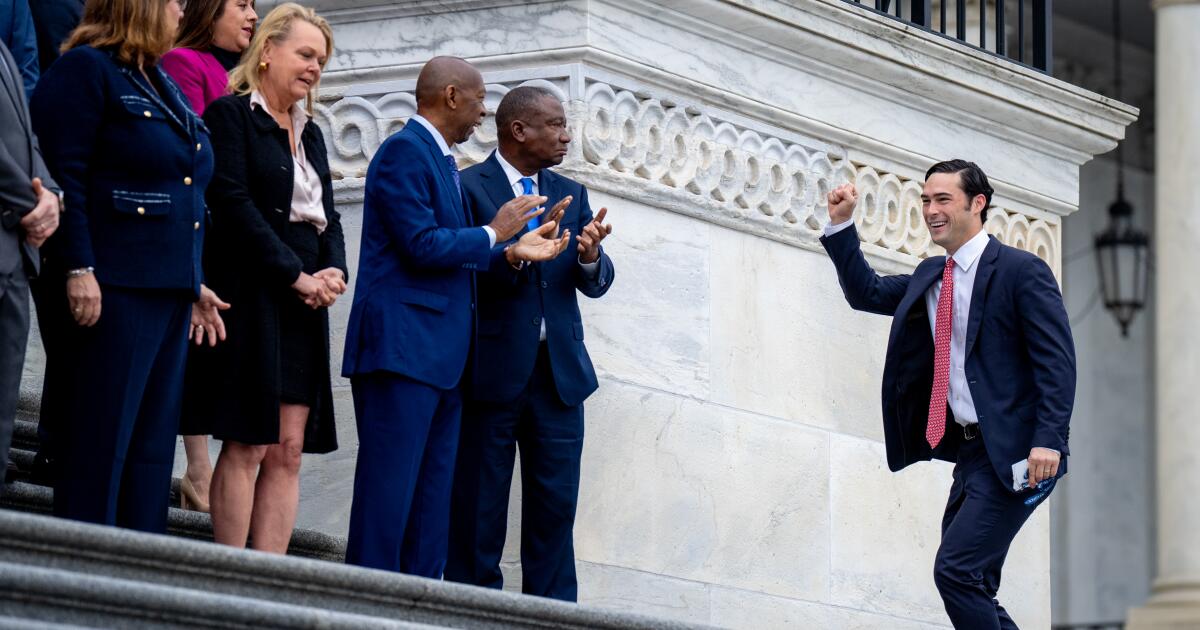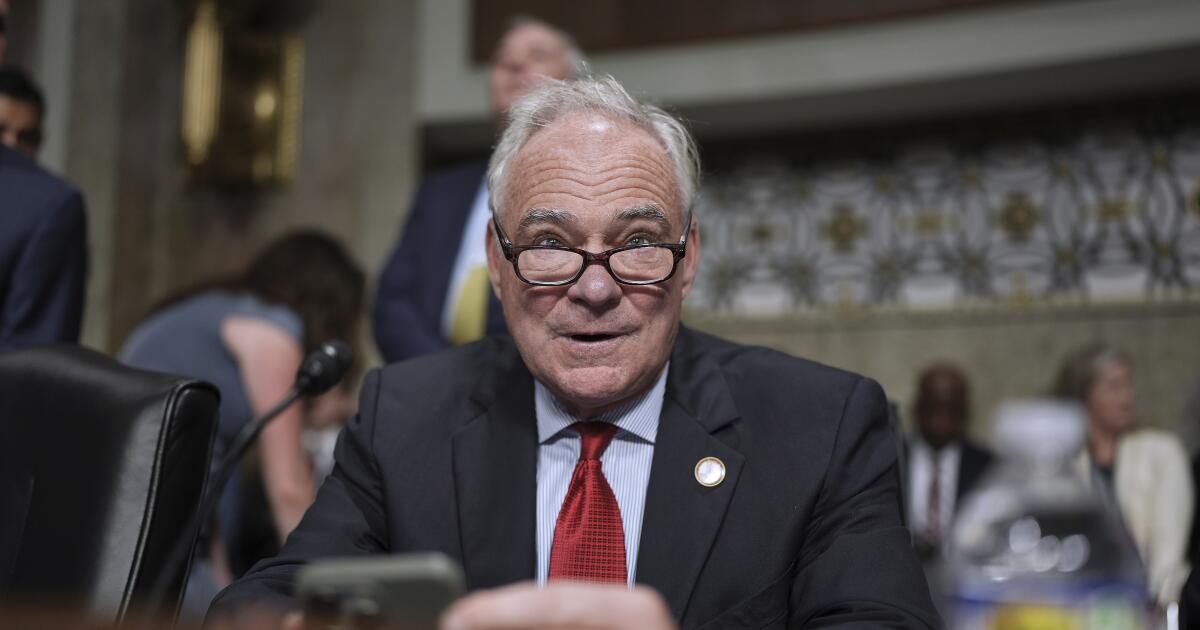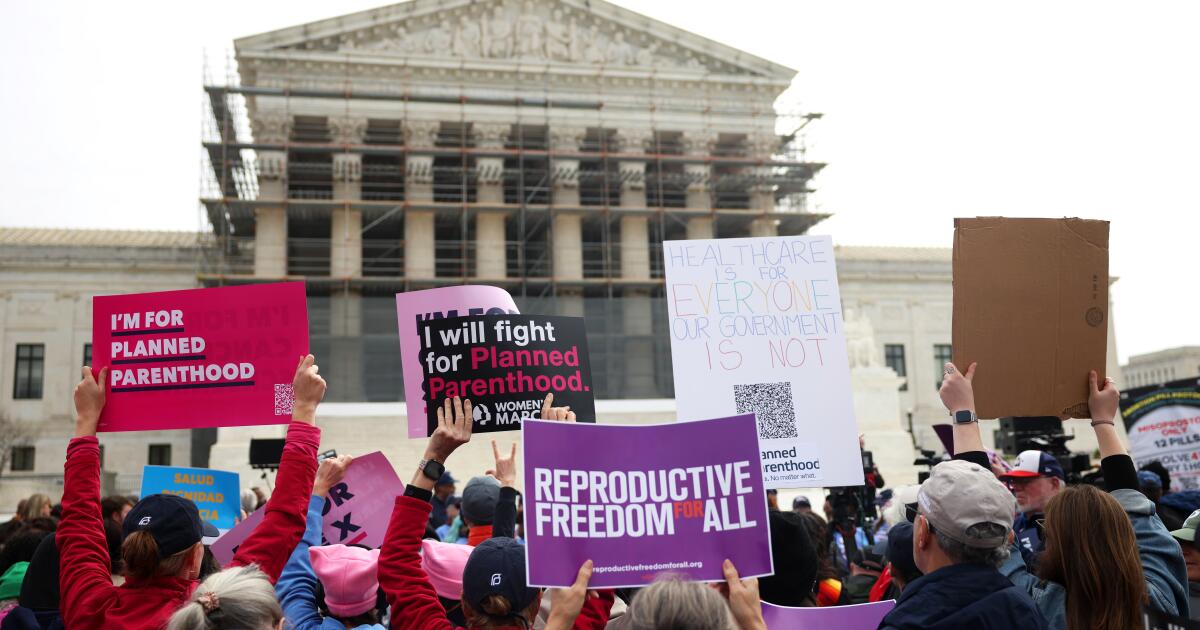WASHINGTON — Congress adjourned Tuesday, ending an unusually rancorous year that sorely tested the constitutional relationship between the legislative branch and the President.
Throughout 1987 and even into its final hours, the Democrat-controlled Congress clashed repeatedly with President Reagan on a wide variety of matters, including the budget deficit, Reagan’s sale of arms to Iran, assistance for the Nicaraguan resistance and U.S. military involvement in the Persian Gulf.
In addition, Congress handed the President several serious legislative setbacks by rejecting the nomination of Robert H. Bork to the Supreme Court and enacting two major bills–one providing for clean water and the other funding highway construction–over Reagan’s veto.
Lapse of Funding
So deep were the divisions between Reagan and Congress that they let the bureaucracy go unfunded for more than a day before adjournment as they fought over continued appropriations for the Contras and the renewal of the broadcasting industry’s so-called Fairness Doctrine.
But unlike most years, when squabbling between Congress and the White House can be attributed purely to political differences, the debate in 1987 was seen as a more fundamental struggle over the constitutional roles of the two branches of government.
“Indeed,” Senate Majority Leader Robert C. Byrd (D-W.Va.) said last week, “it is my belief that 1987 was a year of constitutional challenge and struggle regarding the separation of powers. . . . The Congress and the Administration were engaged in a vigorous and most serious debate over how the power of this government, derived from the people, should be exercised.”
The Iran-Contra affair exposed a general disregard for Congress inside the Reagan White House that embittered many members of both parties–making smooth relations between the two branches almost impossible. Reagan’s former aides publicly acknowledged that they had lied to congressional committees on the grounds that Congress should not be meddling in the executive branch’s foreign-policy initiatives.
Senate Role in Treaties
Likewise, the Administration’s decision to reinterpret terms of the 1972 Anti-Ballistic Missile Treaty were viewed on Capitol Hill as an attempt to circumvent the Senate’s role in treaty ratification. And the battle over the Bork nomination eventually came down to a quarrel over the Senate’s right to advise and consent on judicial nominations.
Convinced that Reagan was trying to bypass them, members of Congress sought to reassert their role as equal partners in governance. By rejecting the Bork nomination, pressing its own interpretation of the 1972 Anti-Ballistic Missile Treaty and frequently asserting its independent will on other issues, Byrd said, Congress succeeded in restoring the constitutional balance.
“I believe the 100th Congress has maintained the balance and checked the abuses,” he said.
Some of the quarreling was nevertheless inevitable, since 1987 was the first year of the Reagan presidency in which Democrats controlled both houses of Congress. Democrats contend that Reagan, who had become accustomed to getting his own way in the early years, still has not fully realized that a divided government demands compromise.
‘Wasn’t in Step’
Frequently, the Democrats who are running Congress saw it as their duty to rein in the President’s more strident policies. “The Administration went to the very outer limits–it wasn’t in step with the American people,” Byrd said. “Again and again, the energy of the Congress was committed to maintaining the mainstream political consensus.”
As a test of the new Democratic leadership, however, the year was not a raving success.
Many programs long supported by Democrats suffered new cutbacks and few, if any, new initiatives were enacted into law, even though some major pieces of legislation–such as a trade bill, catastrophic health insurance and welfare reform–are waiting to be passed next year in the second session of the 100th Congress.
“It hasn’t been a complete bust, but I’ll tell you it’s been pretty near that,” said House Minority Leader Robert H. Michel (R-Ill.). And Senate Minority Leader Bob Dole (R-Kan.) said: “We have done some things but I can’t remember what.”
Democrats, of course, had a more positive view of the year’s accomplishments. Byrd insisted that Congress made “healthy and positive progress” on a number of policy fronts, and House Speaker Jim Wright (D-Tex.) noted that the Democrat-controlled Congress succeeded in increasing money for the homeless, AIDS research and education.
Deficit Reduction Pact
Yet, neither Democrats nor Republicans were especially proud of the session’s most widely publicized achievement–the deficit reduction package that was negotiated in the wake of the Oct. 19 stock market crash. In Dole’s words, Congress “missed an opportunity there for a bold move” when it settled for a modest plan to reduce the projected shortfall by $76 billion over the next two years.
Many Democrats were even more disappointed by the outcome of the Iran-Contra hearings, which many had hoped would turn up evidence that Reagan was aware of the diversion of funds from the Iran arms sales to the Nicaraguan resistance. Not only was there no such proof, but also Reagan’s fired National Security Council aide, Lt. Col. Oliver L. North, succeeded in using the hearings as a platform to promote support for the Contras.
Byrd said the Democrat-controlled investigating committees made a mistake by focusing attention on the complex diversion of funds to the Contras while failing to fully explore the highly unpopular sale of U.S. arms to Iran.
“It seems to me that, if there is any constructive criticism which comes a bit late for the hearings, it was that they centered too much on the Contra aspect as against the arms-for-hostage deal,” he said.
Participants’ Futures Affected
No doubt the political fortunes of several highly visible Congress members were affected by these events–particularly by the exposure that some of them got during the lengthy televised Iran-Contra hearings.
The weaknesses of the probe were widely blamed on Sen. Daniel K. Inouye (D-Hawaii), chairman of the Senate investigating committee, and as a result he is now seen as less likely to be chosen Democratic leader next year, if Byrd decides to step down. At the same time, several new stars did emerge from the hearings, including Sens. George J. Mitchell (D-Me.) and Warren B. Rudman (R-N.H.), and Rep. Lee H. Hamilton (D-Ind.)–all of whom appear destined for more responsible roles in their parties.
Meanwhile, in his first year as Speaker, Wright gained a reputation for controversy exceeding that of his predecessor, the retired Thomas P. (Tip) O’Neill Jr. (D-Mass.). House Republicans are furious with Wright for what they see as his highly partisan tactics, and the Administration condemned him for meeting with Nicaraguan leader Daniel Ortega at a time when the President opposes bilateral talks with the Sandinista government.
Refusal to Negotiate
As has occurred frequently in recent years, the process of trying to trim the deficit overwhelmed almost every other item on Congress’ agenda. For the first 10 months of the year, the President adamantly refused to negotiate with Congress over the deficit.
By midyear–with appropriations bills backing up–it was clear that Congress could not meet the deficit goals of the Gramm-Rudman law it had passed less than two years earlier, and embarrassed lawmakers passed a new version that promised a balanced budget in 1993, rather than 1991.
Reagan was already facing the prospect of the Gramm-Rudman law’s making deep automatic cuts in defense when the stock market plummeted 508 points on one October day, causing him to enter into negotiations with Congress and consider a tax increase for the first time.
The resulting package called for $9 billion in higher taxes, cuts in military spending and most domestic programs totaling $7.6 billion, a $4-billion cut from federal benefits programs and a number of other measures that–at least on paper–will pare $33 billion from this year’s projected $180-billion deficit.
The Bork episode was certainly a low point in relations between Congress and the President in 1987. When it became clear that the Senate was going to reject Bork for being too extreme on civil liberties issues, the President’s supporters responded with recriminations and Reagan vowed to nominate someone equally objectionable to the Democrats.
Kennedy Confirmation Likely
But Reagan’s second choice, Judge Douglas H. Ginsburg, was quickly scuttled by the disclosure that he had smoked marijuana on occasion in the 1960s and 1970s–forcing the President to choose a more traditional jurist for his third nominee. As a result, Justice-designate Anthony M. Kennedy of Sacramento appears headed toward a smooth confirmation early next year.
Arms control policy also divided Congress and the President through most of the year. Congress balked at Reagan’s decision to break out of the unratified 1979 Strategic Arms Limitation Treaty as well as his attempt to reinterpret the ABM treaty in a way that would allow for testing of aspects of the “Star Wars” missile defense system.
For the first time, the Senate passed legislation, similar to that previously passed by the House, requiring the President to abide by the 1979 SALT agreement and the traditional interpretation of the ABM treaty. Although a last-minute compromise kept this issue from precipitating a showdown between Reagan and Congress over defense spending, the controversy has only been postponed until next year.
U.S. funding for the Contras also continued throughout 1987, even though the Iran-Contra affair stirred greater opposition among Democrats. It now appears that the outcome of the next big Contra aid vote, scheduled for Feb. 4, will hinge on the results of the current cease-fire negotiations between the Contras and the Sandinistas.
Benchmark for Agreements
Despite the divisiveness of 1987, Democratic leaders predict that next year could be less quarrelsome–especially if the President shows a greater willingness to compromise, as he did on the deficit reduction package. Byrd said the budget talks set a benchmark for resolving future differences, such as next year’s big battle over trade legislation.
Ironically, it is the President’s usual critics in the Democratic Party who will be supporting Reagan early next year when he seeks Senate ratification for the recently signed U.S.-Soviet agreement to eliminate medium-range nuclear weapons. GOP conservatives generally oppose the treaty.






















